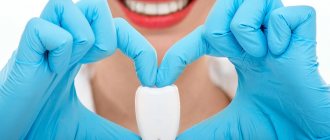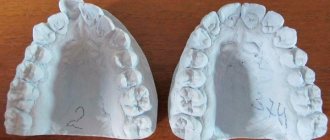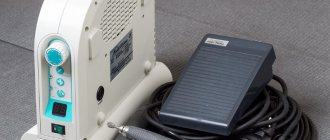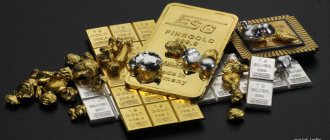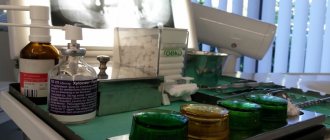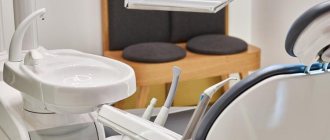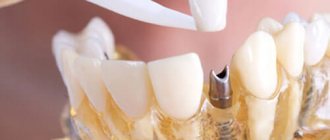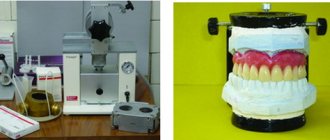1840
Technologists have thoroughly studied the physical properties of medical plastics, which has made it possible to widely introduce fast-hardening material into the practice of dentistry, orthodontics and maxillofacial surgery.
Orthodontic appliances are designed to correct abnormalities of the jaw system. However, the design of the devices will not function properly without fast-hardening materials.
In addition, acrylic substances are used to make dental crowns used in prosthetics.
General overview
Rapid-hardening plastics are also called self-hardening. In medical practice, the adaptation of this type of material has technologically changed the process of creating structures.
Peculiarities:
- the ability of the material to undergo accelerated polymerization at everyday room temperature, or human body temperature;
- high level of compatibility of the material with other forms of substances;
- there is no destructive effect of the material on the oral mucosa.
In addition, medical compounds are used to repair damaged prosthesis bases.
Also, materials of this type make it possible to restore a combined non-removable structure directly in the oral cavity .
Care
Basic care rules to ensure the long life of an orthodontic product:
- twice daily cleansing of the oral cavity with a soft brush and paste. In this case, the installation site of the crown must be treated with special care,
- rinsing your mouth after eating,
- use dental floss, irrigators or brushes to remove food grains from the interdental space,
- try not to touch the teeth of the upper and lower jaw too tightly,
- Do not eat viscous or too hard foods, especially avoid biting them. When taking them, the chewing load must be shifted to the other side,
- If the product is chipped or broken, contact your dentist as soon as possible.
Composition and properties
Quick-hardening plastic masses are used in orthodontics in various variations, most often in the manufacture of removable and non-removable appliances and their parts.
Each factory package contains a powdery substance (varieties of acrylic), liquid (methyl methacrylate with various additives) and activators.
When these three components are combined, a solid dental material for prosthetics is formed, and polymerization occurs.
Functional features of the constituent elements:
- Powder is an ether polymer of methacrylic and acrylic acids with various metal additives. This substance also contains dyes and plasticizers. The powdery substance is the basis for creating materials.
- The liquid consists of ether compounds of methacrylic acid, chemical compounds similar in composition - monomers and various additives.
- Monomer is an ethereal transparent consistency with a strong characteristic odor.
Improper storage can cause self-polymerization, so it is important to tightly seal the bottle and add an inhibitor to prevent the substance from hardening. The function of this substance is to polymerize the composition without heating. - Fillers are able to add viscosity to the powder, increase the strength of the composition and protect polymers from rapid wear. In addition, there are antimicrobial fillers that prevent the formation of microorganisms in polymers.
High quality medical plastics must be packaged in kits containing liquid and powder.
What design of a removable denture for the upper jaw do dentists consider the best?
Come here if you are interested in the reasons for the development of denture stomatitis.
At this address https://www.vash-dentist.ru/protezirovanie/semnyie-p/vidov-pri-otsutstvii-bolshogo-kolichestva-zubov.html we will consider the types of prosthetics in the absence of a large number of teeth.
New trends in the production of base polymers
In the last few years, there has been a tendency to introduce aesthetic fibers into the structure of hot-curing base polymers. They look more advantageous, but they are inferior to the standard ones in terms of physical and mechanical properties. “Veins” in the structure of polymers lead to the formation of microvoids and reduce the density of the material. Oxygen in microvoids increases the number of monomers. Therefore, such polymers with improved aesthetic characteristics should be used only when indicated - in rare cases.
Despite certain disadvantages, acrylic plastics remain the most common material for the production of removable denture bases. Their main advantages are low price, manufacturability and lack of need for expensive equipment.
Advantages and disadvantages
The materials are used in medicine for various purposes. Versatility is associated with a set of good basic physical and chemical properties.
The advantages of the material in orthodontics are undeniable:
- do not have harmful effects on the body;
- the material is highly durable and can withstand strong mechanical stress;
- the ability to eliminate the breakdown of a fixed prosthesis directly in the oral cavity;
- the ability of the material to quickly self-polish (harden) under normal conditions, which simplifies the process of filling teeth;
- has a color similar to the natural color of the dental crown;
- a fast, simplified material processing technique that reduces the time required for manipulations in the patient’s oral cavity.
However, there are also disadvantages:
- inexpensive types may have an unaesthetic appearance;
- may darken during prolonged use;
If the consistency is not prepared correctly, the material becomes insufficiently strong and is susceptible to chipping.
When are temporary crowns used?
The installation of such orthodontic structures is recommended by the dentist in the following cases:
- minor defect in the dentition. Installing a temporary crown will help eliminate the unhealthy color of the element or its irregular shape in order to maintain the normal appearance of the dentition,
- waiting for the production of a permanent prosthesis,
- preventing infection of dental tissues after grinding and displacement of adjacent elements,
- exclusion of fusion of the gum bed, if the patient has not decided on the choice of further type of treatment,
- installation of a splint for periodontal disease. A plastic crown normalizes problems with diction,
- creating support elements to hold removable products in order to properly distribute the chewing load,
- violation of tooth integrity more than 50%.
It is worth remembering that the following contraindications exist:
- age up to 12 years,
- bite too deep
- presence of bruxism,
- inflammation of the gum or tooth tissue at the installation site,
- allergic reaction to plastic,
- neurological and mental disorders.
Plastic is highly porous, so if you are not particularly careful about hygienic oral care, you should avoid installing this type of structure.
Popular products
Several basic types of plastics, which are universal, are widely used in dental practice.
The powdered composition should be mixed in certain proportions, and it can be used in different viscosity states.
Protacryl
The substance is classified as a basic type of self-hardening plastic. Supporting properties are distinguished:
- powder with a pink tint contains polymethyl methacrylates, initiators, activators, opacifiers, dyes;
- manufacturability and high strength;
- does not change color upon contact with oral tissues;
- used in the reconstruction of removable dentures;
- in case of loss of adhesiveness, it is used for restoration of bases.
In addition, the material is widely used for the manufacture of various orthodontic appliances.
Noracryl
This product is most often used in medical practice to restore damaged bridges.
Characteristics of Noracryl:
- contains three types of powders, two liquid catalysts and a liquid solvent, a filler that reduces water absorption;
- the resulting mass is used for filling dental canals and applied to the dental cavity;
- The curing time of the material is minimal and reaches 5-7 minutes.
The duration of mixing this type of material should not exceed one minute.
Carboplast
A polymeric substance with a yellow color. Characteristics of carboplast substance:
- the composition contains a ternary copolymer of methyl acrylate, butyl methacrylate, liquid, epoxy resin, stabilizer, filler - chalk;
- the material kneads well in the hands after mixing, this allows it to be evenly distributed over the plaster model;
- hardens at room temperature directly on the model.
Widely used when creating casts and models for further orthopedic work.
Redont
One of the forms produced for medical purposes in three main versions - opaque Redont, unpainted and transparent Redont-02, pink transparent Redont-03.
Characteristics:
- The product consists of powdered copolymer of methyl methacrylate and ethyl methacrylate, liquid methyl methacrylate, inhibitor, activator;
- used to restore broken dentures;
- used in the design of various medical mechanisms.
The main use of Redont is to move removable dentures in cases where the fit to the tissues of the oral cavity is disrupted or when there is a loss of adhesion to dental crowns.
Stadont
Acrylic substance having the following characteristics:
- main composition: methyl copolymer powder, opacifier and liquid methacrylic acid methyl ester, catalyst, stabilizer;
- factory markings contain substances of three different shades;
- are used in the production of medical fixing splints used in the presence of periodontal disease.
The main purpose of the product is to use it for the repair of bridge structures and removable plate prostheses.
Acrylic oxide
The product is white in color and has positive chemical characteristics:
- main composition - resins (acrylic and epoxy), mineral fillers;
- the product is not subject to shrinkage;
- has a color similar to the natural color of teeth;
- has high plasticity.
It is used for filling canals, making crowns, modeling dental inlays.
Carbondent
An acrylic substance having a composition with enhanced physical and chemical properties. Characteristics:
- the powder contains methyl acrylate ternary copolymer, butyl methacrylate, liquid with the addition of epoxy resin, mineral fillers, a stabilizer, a substance that protects the material from aging;
- The preparation kit contains 6 powders, differing in color type;
- improved characteristics of strength and adhesiveness.
A mass prepared from powder is used to create dental impressions.
Five popular models of containers for dentures and their features.
In this publication we will tell you what compensation pensioners are entitled to for dental prosthetics.
Here https://www.vash-dentist.ru/protezirovanie/semnyie-p/nedorogie-zubnyie-nadezhnyimi.html read about the types of inexpensive dentures.
How are temporary crowns made?
The creation of plastic orthodontic products can take place both in the dental office (direct method) and in a special dental laboratory (indirect method). Moreover, in the second option the design is considered to be of higher quality and more reliable.
There are stages of making crowns by a dentist:
- taking a silicone or plastic impression from the tooth, which will subsequently serve as a form for making a temporary structure,
- preparation of the element to create space for the crown. When treating single-rooted teeth, it will be necessary to perform depulpation to avoid burns of the pulp and damage to the tooth tissue. In the case of prosthetics of masticatory elements, it is possible to do without depulpation, but then anesthesia will be required,
- polymerization of plastic. A mixture prepared from an acrylic plastic solution and polymerizing powder is poured into the resulting impression and placed on the tooth.
- in a few minutes it hardens, and then the impression is removed from the oral cavity, and the resulting plastic prosthesis remains on the element of the dentition,
- carry out grinding and polishing of the product,
- Fixation is carried out with a cementing solution on the ground tooth.
To read: How long does it take for gums to heal after wisdom tooth removal?
With this manufacturing method, the orthodontic device is worn for no more than 1-2 months. If longer wearing is required, you must wait until the crown is created in a dental laboratory:
- silicone impressions of the upper and lower jaw are made,
- A plaster model is created based on the shape of the casts. It is on this that the product is then adjusted,
- model a product from wax,
- make a plastic crown,
- the structure is ground and polished,
- installation of the product on the prepared tooth and fixation with a cementing solution.
Before placing a temporary prosthesis, it is necessary to thoroughly sanitize the oral cavity, remove plaque and stones affected by the carious process of tissues. If necessary, replace old fillings. These procedures will help increase the life of the orthodontic structure.
Features of application
It is necessary to use products for medical purposes only if mixed in the correct proportions.
Features of the use of materials:
- The liquid is mixed with the powdered composition until a viscous substance is formed. Excess monomer can lead to increased material shrinkage, porosity and poor coloration.
The mixed composition is tightly closed. Over a half-hour period of time, the mass swells and goes through several stages: sandy, viscous, dough-like, rubbery. - The polymerization mode occurs when immersed in water or heated and the presence of an activator. The individual regimen must correspond to the description on the packaging.
It is important to follow the instructions exactly, because if the polymerization process is shortened, there will be an excess of monomer, which will provoke inflammatory processes in the mucous membrane. If overheated, it will become excessively brittle. - During the production of prostheses, the formation of porosity in the material is possible. This phenomenon occurs during accelerated polymerization and when there is a lack of monomer.
If the proportions are observed, the listed phenomena and deformation can be avoided. Depending on the stage of swelling, specialists use the material for filling, making devices, and making impressions.
The video discusses the properties of quick-hardening plastic for the manufacture of prostheses.
How are temporary crowns installed?
There are 2 main methods for installing temporary prostheses:
- in the dental office. A silicone impression is taken from the problematic element. The tooth is ground and, if necessary, depulped and filled. If the nerve does not need to be removed, an injection of anesthesia is necessary. The prepared plastic mass is poured into the impression and placed on the tooth. After it hardens, the impression is removed and the crown is fixed with a cementing solution. Then it is sanded and polished,
- installation of a pre-prepared temporary prosthesis. The product is delivered from the dental laboratory to the dentist, who places it on the patient's prepared tooth during the follow-up appointment. Fixation is carried out in the same way as in the previous case.
Reviews
Plastics have the ability to quickly harden under normal conditions, so they are widely used in medical practice for filling, manufacturing and repairing devices.
You can share your feedback on the use of plastics in the comments to this article.
If you find an error, please select a piece of text and press Ctrl+Enter.
Tags prosthetics removable dentures
Did you like the article? stay tuned
Previous article
Types of complications that arise after dental prosthetics and treatment tactics
Next article
What justifies the popularity of French TBR implants in many countries around the world?
Classification of polymers
Polymers used in prosthetic dentistry belong to one of three groups. Each of them is subject to different hygienic, toxicological, aesthetic, and technological requirements.
- Basic, or basic polymers in dentistry are used for the manufacture of artificial teeth and bases for removable dentures.
- Auxiliary - needed for impressions, molding and modeling.
- Clinical polymers include sealants, restoratives, and adhesives.
